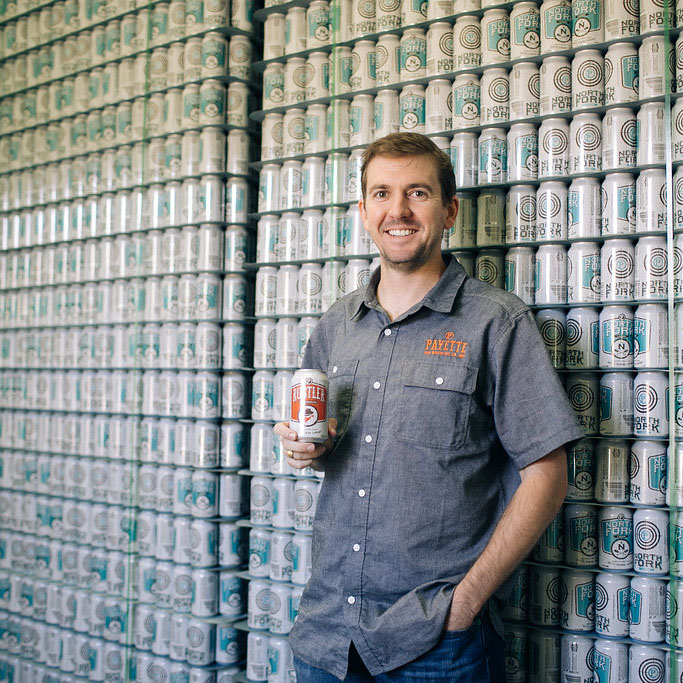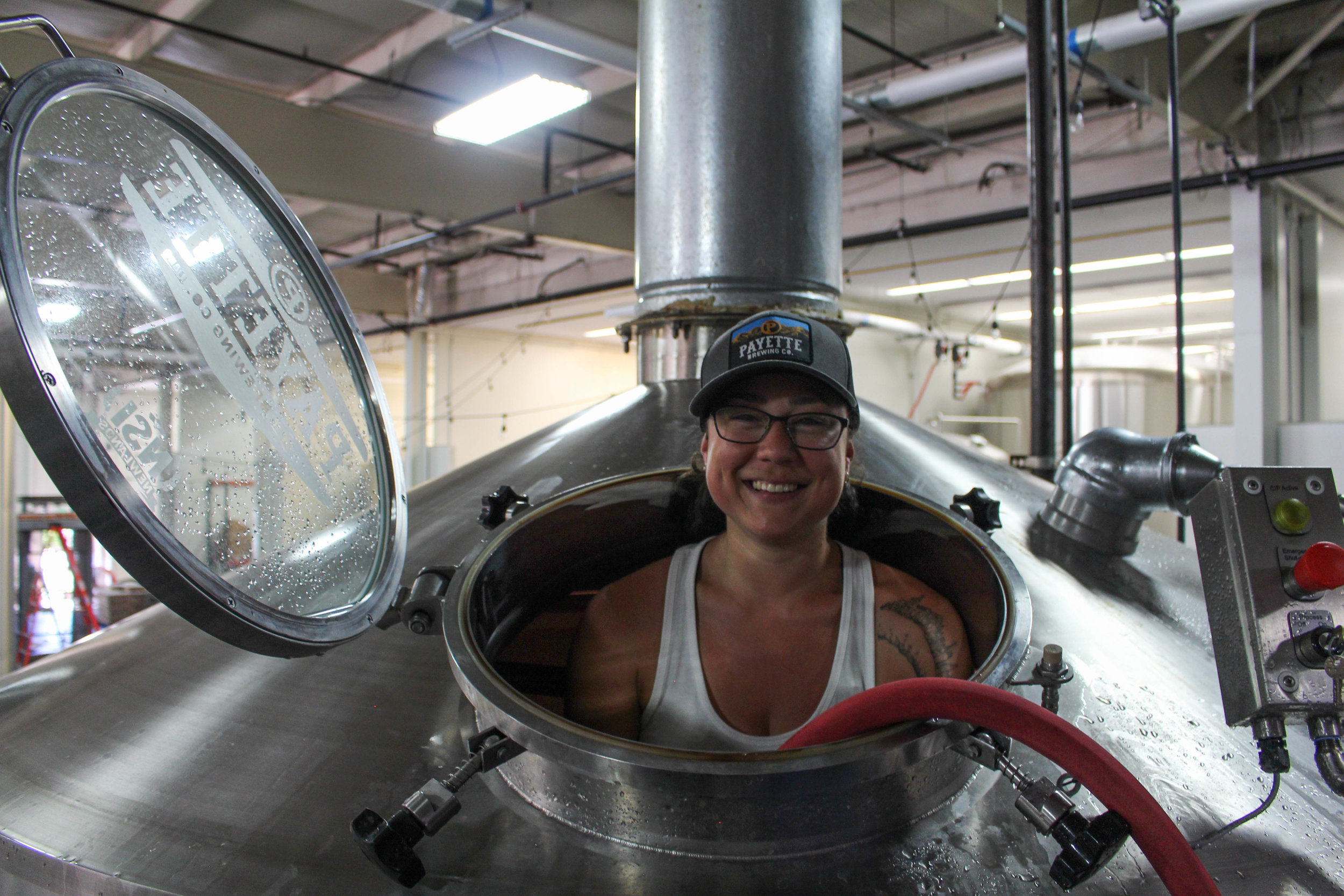At Payette, we strive to create a space where the community can gather and make lasting memories. We seek any opportunity where the guest experience can be enhanced... and one piece of that is through our brewery tours.
WE RECENTLY RESTRUCTURED OUR BREWERY TOURS WITH Several new additions INCLUDING tour options of varying lengthS and FUN FACTS BEHIND OUR history and the brewing process!
CONTINUE READING FOR A QUICK GLIMPSE OF WHAT YOU’LL LEARN ON A TOUR
our story
Born and raised in Boise, Mike left corporate life as an industrial engineer at Boeing in Seattle to dive into one of his many passions, BEER. After receiving an Associate Degree in Brewing Technology from Chicago’s Siebel Institute, Mike returned to Boise in 2010 to establish Payette Brewing Company with the mission “to continually brew awesome beers while building a culture that connects, educates, makes a difference and champion the craft brew industry to our consumers, community and partners.”
We opened in May 2011 in Garden City, just a few miles from our present location. When we maxed out brewing capacity and wanted to continue to grow, we moved into current building. Previously the home to Bronco Elite Athletics, we completely transformed the building to accommodate a larger brewing system so we could continue brewing great beer, grow our distribution and create an awesome community gathering space.
The brew
As for the brewing process, outside we have two large grain silos, each filled with 75,000 lbs of malted barley, one Pilsner and one Pale. Depending on the recipe, we pull the majority of grain from those silos and blend in specialty malt. About 2-3 metric tons of malted barley per batch run through the mill where each kernel is cracked open to reveal the starch that will convert sugar. After the milling process (now called grist) is transferred to a mash mixer while simultaneously combined with hot water.
Fun Fact: Idaho is the largest barley producer in the u.s.!
Here at Payette, we brew on a four-vessel, 60 barrel system that was manufactured in Vancouver, CA. One barrel is 31 gallons, which equates to two 15.5 gallon kegs, one batch can be up to 120 kegs of beer! The brewing process starts on our brew deck and moves through each vessel in a counter-clockwise direction.
2. Lauter Tun
The mash is transferred to the lauter tun and spread out evenly with rakes. At this step, liquid is separated from the grain which sits on top of the screens allowing the wort to drain out the bottom and transfer . into the brew kettle.
3. Brew KEttle
The brew kettle has steam jackets and a calandria that bring the wort to a boil. The wort boils for about an hour to kill any potential beer spoiling bacteria. This is also where some of the hops are added. Hops are a preservative but also provide bitterness, flavor, and aroma to beer. The earlier the hops are added, more bitter characteristics are attained and later in the process gives extra aroma.
1. Mash Mixer
The cracked grain (depending on the recipe) is mixed with hot water in this vessel. There is a large metal blade that mixes the malt and water to create the mash. The mash is between 148-158 degrees and at these temperatures enzymes in the malt convert starch in the grain into fermentable sugars.
4. Whirlpool
The wort is then pumped to the whirlpool where the liquid spins around and rests prior to fermentation. The whirlpool creates a “trub pile” in the middle, which is a collection of hops, proteins and other solids we do not want in the fermenter. The wort is then pumped through a chiller and into a fermentation vessel.
fermention
Our fermentation tanks have cone shaped bottoms where the wort becomes beer. Here at Payette we have a combination of 60 and 240 barrel fermenters. This is the step in the process where the yeast is added. Yeast is a single celled organism that consumes sugar and creates alcohol and CO2. During the 2-4 weeks in the fermenter, yeast will consume all of the sugar it can. That means the more sugar, the more alcohol! All of the tanks are temperature controlled and have jackets with glycol running through them to keep each tank at a specific temperature, then cool them to 32 degrees when the beer is ready to head to filtration.
fun fact: this is also the step where certain BEERS will receive an added dose of hops, known as dry hopping!
Filtration
We use a centrifuge known as “Johnny 5” to clarify our beers. The beer is put through the machine at 7,000 RPMs which separates the solids such as yeast and hop particles from the beer. We are able to set the clarity level of the beer, so our lagers can be brilliantly clear or be left with a touch of haze for an IPA or a Hefeweizen. This is a critical late step in the process when the beer is done fermenting on its way to carbonation.
Carbonation
After the beer goes through its cycle through the centrifuge, it transfers to the brite tanks. Our brite tanks are all located in the center of the brewery and are the final step before beer gets packaged. CO2 is added to the brite tanks through a ceramic carbonation stone that essentially bubbles the CO2 into the beer. We measure our carbonation levels prior to packaging and make sure every beer has the proper carbonation level, which varies for different styles of beers.
The brite tanks are where we being to separate the beer into their consumable vessels, kegs and cans! We fill kegs directly from the bottom of the brite tanks. Once a keg is filled it is ready to drink! It is carbonated and cold, so can be tapped right away in our taproom or is moved to our cold storage where it is prepped for distribution across Idaho or one of the other 7 western states we now distribute to!
Canning
We run a four-head canning line capable of filling 40 cans of beer per minute. The cans are pushed off the depallatizer onto the conveyor belt. They travel through a twist rinser then get a date code printed on the bottom. Each can is purged with CO2 then filled with beer and a lid immediately dropped on. The cans then go through seamer, where the lid gets attached, then the can is rinsed before moving through a fill level detector. Properly filled cans are then put into 6, 12, and 24 packs.
fun fact: we were the first brewery in idaho to can craft beer!
why cans you might ask?
Well, for starters, cans are much more convenient for all of your ADVENTURES. Cans make beer much more portable without having to worry about broken glass while rattling around your ski jacket pocket, cooler, raft, or tackle box. Aside from convenience, cans are much less susceptible to UV light from the sun and exposure to oxygen, therefore reducing the chance of skunking and oxidation. Keeping our beer tasting much better for up to 120 days!
While this is just a brief overview of the brewing process here at Payette, we have several new tour options available for the public that we encourage anyone interested in craft beer to come down and join us for!
BONUS: If you bring your friends and opt to go for a 30 minute group tour, we are now offering an awesome souvenir pint glass to go along with an informative experience!
Just remember, beer tastes better when you see where it’s brewed!












